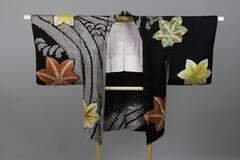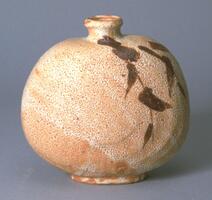36 UMMA Objects
36 UMMA Objects

Japanese (Japanese (culture or style))
Blue-and-white jar with floral and leaf design
1615 – 1643
Museum purchase made possible by the Margaret Watson Parker Art Collection Fund
1964/1.99
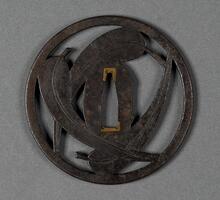
Sadanobu
Tsuba (Sword guard)
17th century
Museum purchase made possible by the Margaret Watson Parker Art Collection Fund
1966/1.103
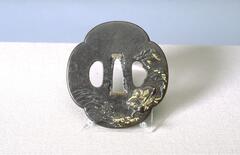
Harunori
Tsuba (sword guard) with inlaid design of samurai on horseback at the shore
18th century
Gift of Mr. and Mrs. Robert T. Weston
1978/2.2

Nakabayashi Chikutō
Birds in a Tree
1840
Gift of Dr. Kurt and Millie Gitter in honor of Stephen Addiss
1976/2.103

Japanese (Japanese (culture or style))
Haori
20th century
Gift of Howard and Patricia Yamaguchi
2013/2.397
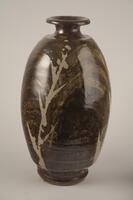
Hamada Shōji
Large Ovoid Vase with Bamboo Design
1930 – 1950
Gift of Mr. and Mrs. Stephen H. Spurr
2003/2.16
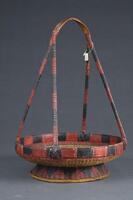
Chinese (Chinese (culture or style))
Flower Basket
20th century
Gift of Ellen and Richard Laing
2006/2.35
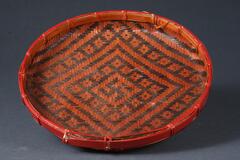
Chinese (Chinese (culture or style))
Flat Basket with swastika motif, from Taiwan
20th century
Gift of Ellen and Richard Laing
2006/2.36
![A rectangluar box woven with bamboo. There is a strip of bamboo with a clasp to keep the basket closed and in one piece. Used as a fermer's lunchbox.<br />
<br />
This lunchbox is woven from strips of bamboo. The outer part is plain-woven, while the inner part is woven in the style of a reed mat. The frame is made from bands of bamboo tied together in two places. Lunchboxes such as this one were used to deliver meals to those working in fields.
<p>[Korean Collection, University of Michigan Museum of Art (2017) p. 278]</p>
A rectangluar box woven with bamboo. There is a strip of bamboo with a clasp to keep the basket closed and in one piece. Used as a fermer's lunchbox.<br />
<br />
This lunchbox is woven from strips of bamboo. The outer part is plain-woven, while the inner part is woven in the style of a reed mat. The frame is made from bands of bamboo tied together in two places. Lunchboxes such as this one were used to deliver meals to those working in fields.
<p>[Korean Collection, University of Michigan Museum of Art (2017) p. 278]</p>](/media/W1siZiIsIjIwMjIvMDkvMjQvMW04NXo0anoyNl9kZWZhdWx0LmpwZyJdLFsicCIsInRodW1iIiwiMjQweDIwMCJdXQ?sha=39da02e99668303f)
Korean (Korean (culture or style))
Farmer's Lunchbox
1850 – 1950
Gift of Ok Ja Chang and the Chang Family
2009/2.50
Loading…

